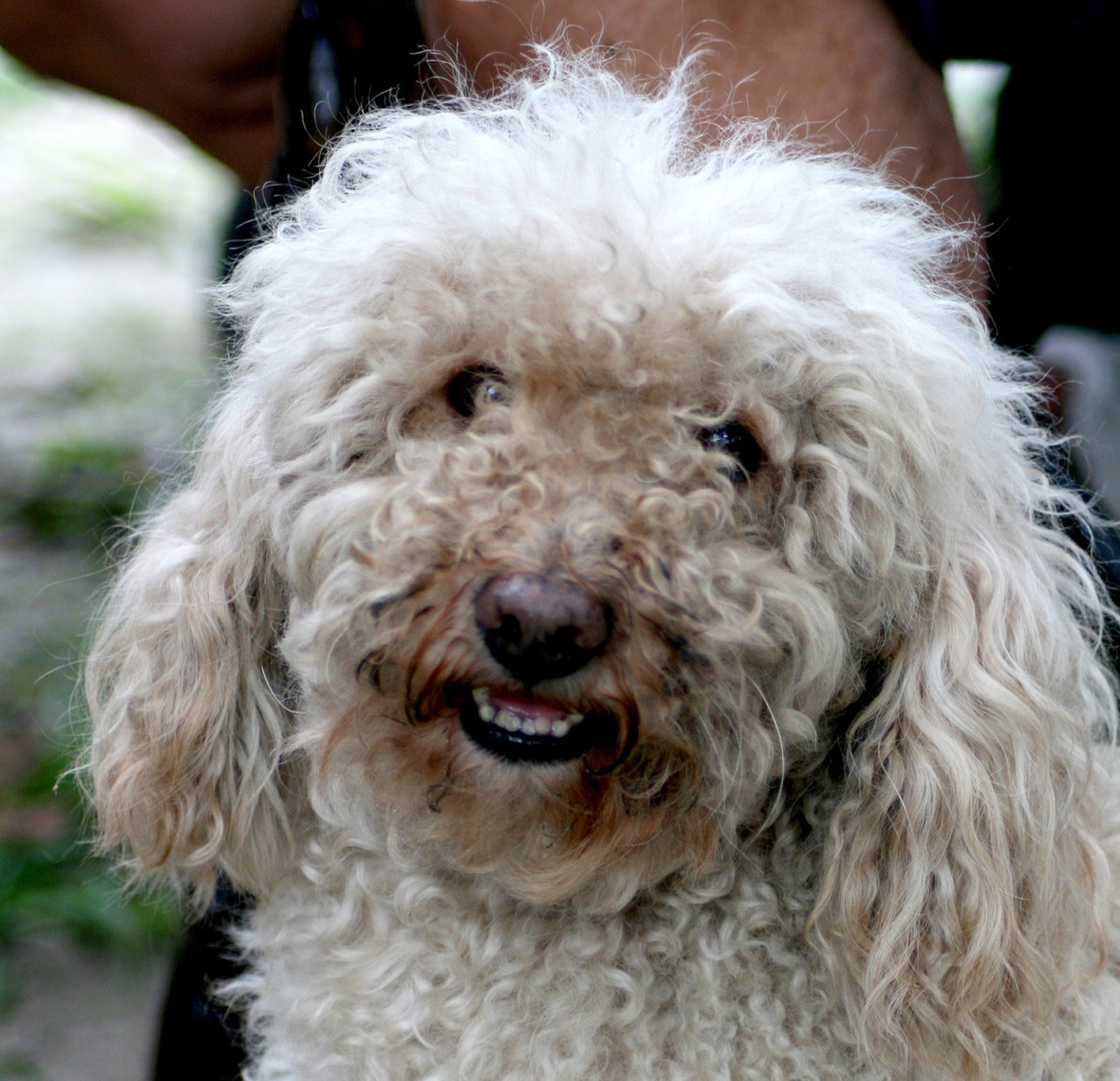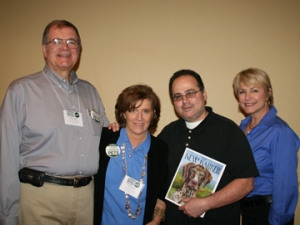by Anna Cooke, Editor in Chief, The New Barker dog magazine.
Would you be able to tell whether or not someone was homeless just by their appearance? According to the Tampa Hillsborough Homeless Initiative (THHI), data collected in 2016 counted 1817 homeless men, women and children. There are 67 counties in Florida.
Bob Blair, a member of the Tampa Elks organization, helps organize a monthly outreach program that assists the homeless. Once a month, volunteers visit homeless camps throughout the city to provide food, counseling, toiletries and other necessities. The roaming outreaches, as they’ve been dubbed, help to determine where each quarterly outreach program will be held, which is much larger in scope.
During the roaming outreach visits, volunteers have noticed an increase in the number of pets living with many of their homeless humans. While it is clear the pets, mostly cats and dogs, are loved, it is obvious they need care. About half the animals are spayed or neutered.
Thankfully, word travels fast among animal lovers, and Victoria Parker of Bayshore Dog Training pulled together some pretty incredible can-do partners, including Second Chance Friends Rescue and 4 Lucky Dogs Pet Rescue. All three organizations pooled their resources and were able to collect large donations of pet food, flea, tick and de-wormer medication, collars, leashes, toys, bowls and tarps. They attended their first quarterly community outreach event as the Homeless Dog Owner Outreach group, which was held yesterday, June 13 at The American Legion Post 111 in Seminole Heights on the corner of Florida Avenue and Sligh.
The group’s volunteers set up tables inside and outside The American Legion. They were just one of many businesses and volunteers donating their products and services to those less fortunate. The Homeless Dog Owner Outreach group connected with more than 50 dog owners, many of whom had not brought their pets with them.
“Oftentimes, when we visit the camps, these folks will refuse any help – whether it’s money or food. There are trust issues with many of these people,” said Bob Blair, the Tampa Elk volunteer. He estimated they would most likely see about 250 people during the day’s event. A hot meal was guaranteed to every person who attended. The food, donated by The Tampa Elks organization, was prepared and being served by Salvation Army volunteers.
“It was an emotional day for me; seeing the gratitude of the people passing by our table,” said Victoria.
“We didn’t know what to expect and ended up helping a lot of grateful people. We gathered good information,” said Bill Gray of Second Chance Rescue. “The biggest thing I learned is that nobody is actively helping these people. We found out that some of the pets are in need of immediate medical care.”
Not everyone reaching out was homeless, but they were definitely in need of assistance, and education. One woman, with two small children, said the family’s young female Chihuahua had lots of fleas. While the medication and supplies were being put together for her, Gray asked if her dog was spayed. “No, we want her to experience motherhood, so we’re going to let her have one litter of puppies before having her fixed.” In a most eloquent and respectful conversation with the woman, Gray was able to convince her that spaying would be beneficial to everyone – the dog and the woman’s family. “Give your contact information to one of our volunteers right here, and we’ll arrange to have your dog spayed. We’ll cover the costs.” The woman looked relieved.
As a result of their willingness to reach out, yesterday, the Homeless Dog Owner Outreach group has been asked to meet with both Metropolitan Ministries and Hillsborough County’s homeless veterans liaison. They are already preparing for the next quarterly outreach program in September.
It would be wonderful to see the Humane Society of Tampa Bay, Animal Coalition of Tampa and the Hillsborough Animal Health Foundation partner with the Homeless Dog Owner Outreach group and provide on-site animal wellness checks, vaccinations and spay/neuter procedures during the Tampa Elks quarterly outreach events.
In a previous issue of The New Barker (winter 2010), we featured a story on Gainesville’s St. Francis House Pet Care Clinic. At that time, the clinic was still operating in the back of the St. Francis House homeless shelter. While driving across town in Gainesville, Chris Machen noticed what others chose to ignore: the proliferation of homeless people with pets; mostly dogs, some cats. She observed how well-loved the pets were when their humans wandered into the St. Francis House soup kitchen and homeless shelter, where she volunteered. Wanting to become more involved in her community, Machen listened as her friend, Gainesville veterinarian Dr. Dale Kaplan-Stein, talked about wanting to open a clinic for animals of Gainesville’s homeless population.
“The homeless are not faceless,” Dr. Kaplan-Stein would tell her detractors. “They are people. Those who say that the poor should not own pets should rethink that statement, because that pet could be the only thing that gives them joy, love and hope. Pets make us all better people. Besides, if these animals are healthier, our community will be healthier.”









You must be logged in to post a comment.